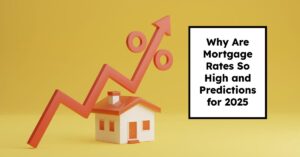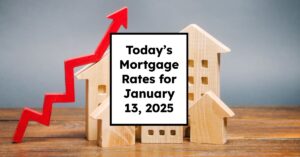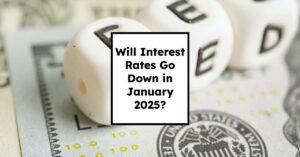The housing market in 2025 is expected to experience a modest improvement, according to Freddie Mac, with declining but still elevated mortgage rates gradually boosting home sales and refinance activity. While significant shifts are unlikely, we’ll probably see some welcome movement towards better affordability, though the path won't be a straight line. Let's dive into what this really means for you, whether you're a buyer, seller, or just keeping an eye on the market.
I've been watching these trends closely for years, and it's fascinating to see how different factors impact the housing landscape. It's not just about numbers; it's about people's lives and their ability to achieve the dream of homeownership. So, let's unpack what Freddie Mac's forecast means for the year ahead.
Housing Market Forecast: Freddie Mac Reveals What to Expect in 2025
Understanding the Current Scene: A Look Back at 2024
Before we jump into 2025, it's important to understand the backdrop. 2024 was a year of interesting, if not predictable, shifts. We saw three main trends:
- A Resilient Labor Market: Despite economic uncertainties, the job market stayed strong. We added an average of 165,000 jobs each month through November, with sectors like healthcare and education leading the charge. The unemployment rate remained low, hovering around 4.2%, and average hourly earnings also increased. This meant people had jobs and some money, which fuels the economy.
- Interest Rate Rollercoaster: Mortgage rates were all over the place in 2024. They started high, then dipped in late September (even hitting a two-year low!), only to climb back up to 6.81% by the end of November. It was a dizzying ride for anyone trying to buy or refinance, and a lot of uncertainty kept people on their toes.
- Rising Homeowners' Insurance Costs: If high prices and interest rates weren't enough, homeowners also faced increasingly steep insurance premiums. The average premium jumped 13.6% from 2023 to $1,761 per year, and some low-income borrowers ended up spending more than 3% of their monthly income just on insurance.
These three things, combined with an economic outlook that's been strong yet not without its anxieties, set the stage for what we might see in 2025.
Freddie Mac's 2025 Housing Market Predictions: The Key Takeaways
Freddie Mac's forecast suggests a more stable, albeit slowly recovering, housing market in 2025. Here's a breakdown of what to expect:
- Slower Economic Growth: The economy is expected to grow, but at a slower pace than in 2024. While the economy remains in good shape, this slowing pace means the economic levers that influence housing will also be gradually easing.
- Inflation Cooling: The forecast suggests that inflation will continue its path toward the Federal Reserve's 2% target, though the current path has had some hiccups. This, I believe, is vital for bringing stability back to the market as inflation has made everyone’s spending more uncertain.
- Gradual Decline in Mortgage Rates: This is good news, with mortgage rates predicted to gradually decline. This doesn’t mean we'll see a sudden plunge to rates we saw a few years back, but any downward movement should help buyers in the market.
- Slight Increase in Home Sales: With lower rates, we should see a modest increase in home sales compared to 2024. The market will still face hurdles, but this is encouraging to anyone in the market.
- Moderating Home Price Growth: House price growth will likely continue to slow down, which is great for buyers who’ve felt locked out. This is partly because of the still high, though declining, mortgage rates as well as a slight increase in the housing supply.
- Increased Refinance Activity: As mortgage rates go down, more homeowners will be in a position to refinance, which means better monthly payments.
- Total Origination Volume Increase: A combination of an increase in purchase and refinancing volumes indicates that we'll have higher mortgage originations in 2025.
In simple terms: We’re not talking about a booming market, but rather a gentle shift towards more balance. The days of frenzied bidding wars and rapidly increasing prices might not return in 2025, and honestly, that's a relief.
The Interest Rate Lock-In Challenge: Still a Factor in 2025
One thing I think is super important to consider is the interest rate lock-in effect. Many current homeowners locked in incredibly low rates a few years ago. This is great for them, but this also means that they’re hesitant to sell and give up their low payments. Freddie Mac estimates that for conventional mortgage borrowers, the average interest rate lock-in effect was about $47,800 as of November 2024. This represents the difference between current mortgage rates and the lower rates homeowners are locked into.
This means that:
- Supply Will Remain Tight: With fewer homes on the market, we can expect less inventory in many areas. So, while the market will stabilize, finding a home might still be competitive.
- Existing Homeowners Have an Advantage: Those who already own a home, especially if they refinanced at lower rates recently, will continue to be in a strong financial position compared to first-time buyers or anyone seeking a new mortgage now.
Homeowner vs. Renter: The Shifting Spending Dynamics
The Freddie Mac report also shines a light on a really interesting topic: how rising housing costs are affecting spending patterns for homeowners and renters. Here's a quick summary of my take on this:
- Homeowners: They've largely been able to shield themselves from the current interest rate volatility, but not from all financial pressures. Many homeowners who locked in fixed-rate mortgages are paying a smaller share of their expenses on mortgage payments. However, their non-mortgage housing expenses, like property taxes, insurance and repairs, have steadily gone up, which has cut into their budgets and spending on other areas of their life.
- Mortgage Costs are Lower: For many homeowners, mortgage costs are low, especially if they refinanced at low rates, but there has been a slight uptick with property taxes and insurance.
- Non-Mortgage Costs are Higher: Expenses beyond the mortgage itself have seen a steady increase.
- Cutting Back Elsewhere: Homeowners are cutting back on things like apparel, transportation and even food.
- Renters: Renters haven’t been so lucky. As rents have gone up, renters have had to adjust, with many making tough decisions about their expenses.
- Rent Burden is Increasing: A growing share of their spending goes towards paying for rent as the costs have increased over the years, meaning they have less to spend on other things.
- Cutting Back on Discretionary Spending: Renters are more likely to cut back on non-essential expenses like eating out, services and apparel.
Here's a table summarizing the spending patterns:
| Category | Homeowners | Renters |
|---|---|---|
| Shelter/Rent | Relatively stable as a share of expenses, often lower due to fixed-rate mortgages. Non-mortgage housing costs are increasing. | Increasing significantly as a share of total expenses. |
| Food | Less affected than discretionary spending | Reduced slightly, with a move to more food at home. |
| Transportation | Can be higher as some move to suburbs | Can be lower due to proximity to city centers |
| Apparel/Services | Reduced significantly | Reduced significantly |
What does this all mean? It highlights the financial disparities between renters and homeowners in today's market. It shows that housing affordability isn't just about mortgage rates; it's also about rising rents and other living costs. If you're a renter, you're likely feeling the squeeze much more than someone who bought a few years ago, and that's not a fair place to be.
My Take on the 2025 Housing Market: The Big Picture
As someone who has followed real estate for a long time, I believe 2025 will be a year of slow, steady adjustments rather than a dramatic overhaul. Here's my personal take:
- Don't Expect a “Boom”: While we might see a slight increase in sales, I don't think we're heading back to the frenzy of 2020-2022. That's probably a good thing. The market needs to find its balance.
- Affordability Will Still Be a Challenge: Even with slightly lower rates and slower price growth, affordability will remain an issue, especially for first-time buyers. We really need to tackle not only mortgage costs, but all the associated costs that make owning a home so difficult.
- The Rental Market Will Likely Remain Competitive: The lack of affordability will likely push more people to rent, which means that rents won't fall drastically and there will be competition. The pressure on renters will stay intense.
- Location, Location, Location: As always, local markets will vary greatly, and so will each neighborhood. Do your research and don't treat the national market predictions as your local market’s reality.
- Be Patient: If you're looking to buy or sell in 2025, be prepared for a market that isn't exactly fast-paced. Take your time and make well-informed decisions. The days of the quick flip are probably behind us.
I think that while all the economic news and market predictions are important, it all comes down to individual choices and needs. It's also essential that everyone, not just the lucky few, has the opportunity to own a home. I will continue to keep a close eye on these trends to see how they unfold, so stick around.
Conclusion
The housing market in 2025 is poised for a slow, steady recovery. While lower mortgage rates might provide a slight boost, affordability challenges will persist. The interest rate lock-in effect and rising insurance costs continue to shape the dynamics of homeowner vs. renter spending, and these will continue to impact real estate for the foreseeable future. Stay informed, be patient, and make smart, well-informed decisions in this evolving housing landscape.
Work with Norada in 2025, Your Trusted Source for
Real Estate Investment
Discover high-quality, ready-to-rent properties designed to deliver consistent returns.
Contact us today to expand your real estate portfolio with confidence.
Contact our investment counselors (No Obligation):
(800) 611-3060
Read More:
- Housing Market Predictions for Next 5 Years
- Housing Market Predictions for the Next 2 Years
- Housing Market Predictions: 8 of Next 10 Years Poised for Gains
- Housing Market Predictions: Top 5 Most Priciest Markets of 2024
- Real Estate Forecast Next 5 Years: Top 5 Future Predictions
- Housing Market Predictions for 2027: Experts Differ on Forecast











